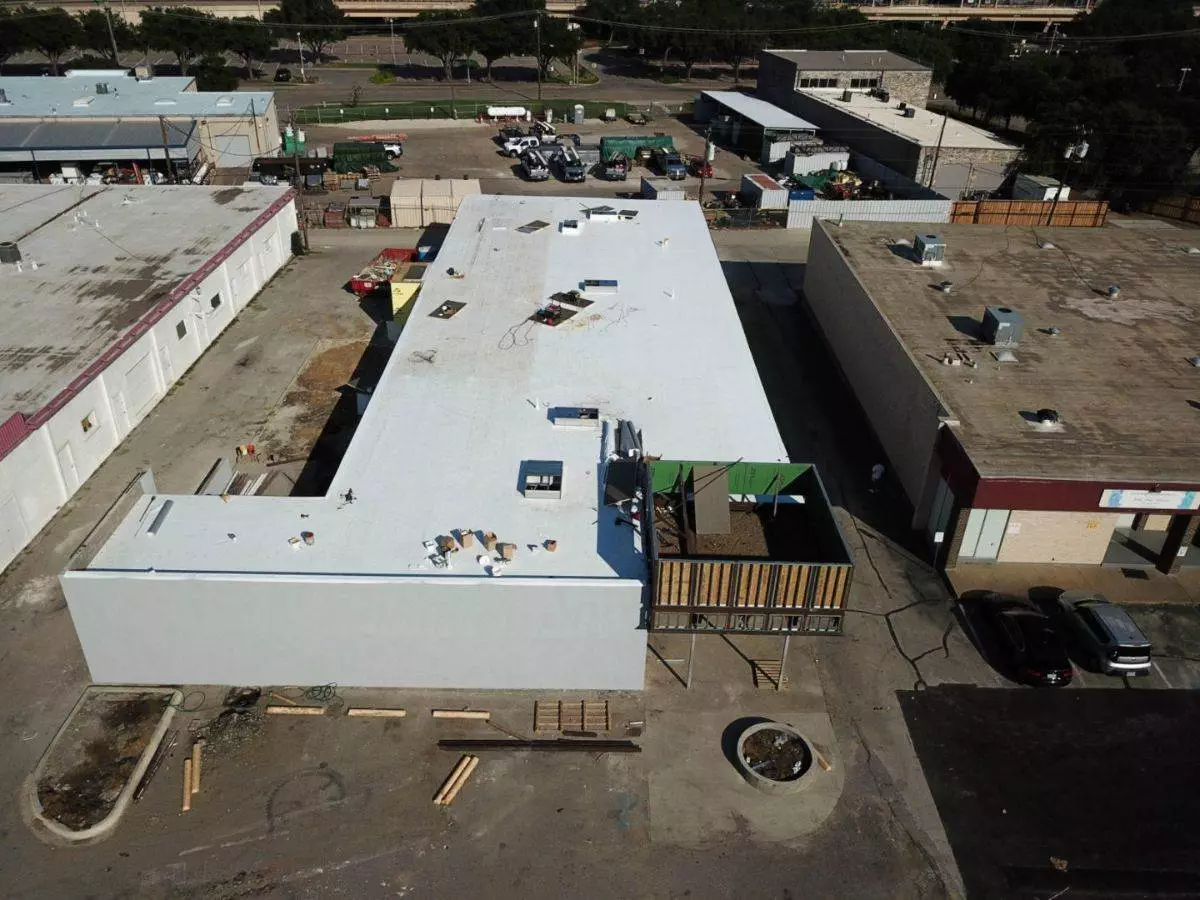
If your roof has a shallow slope, then water will not run fast enough off it to prevent seepage, which means that the roof must be adequately waterproofed. Several materials are available for this task, which we’ll discuss below, but the most promoted is thermoplastic polyolefin (TPO). Also, other materials have properties that make them suitable for commercial roofs under certain conditions.
DB3 Roofing undertakes roofing work in Texas and surrounding states. We are the noted installers and repairers of asphalt shingle roofs in the area, dealing with various low slope commercial and residential roofs.
Let’s quickly glance at the various options available for a low slope roof and how we can make it waterproof for the protection of your business.
Thermoplastic Polyolefin (TPO)
TPO became commercially available in the early 1990s and is still a new product on the market. It is delivered in sheets or rolls, which are placed on top of a prepared bed consisting of insulation and an underpanel. The sheets are overlapped, and the seams are heat welded together. The typical lifespan is projected at 25 years if properly installed.
The most common color is white, although brown and black is also available. The white sheets reflect the sun’s heat and help keep the interior of the building cool.
Spray Polyurethane Foam (SPF)
SPF is a liquid directly sprayed onto asphalt shingles, concrete, metal, and wood roofs. It then expands into a foam and quickly fills gaps, seams and cracks in the existing roof and substrate. A silicone topcoat is applied for added protection. If an experienced roofing specialist correctly applies the foam, it should easily last 50 years or more if maintained and cracks quickly repaired.
SPF has excellent insulation properties and does not require a separate, dedicated layer of insulation material as is needed with TPO and EPDM roofing. In terms of the return on investment, spray polyurethane foam is the accountant’s favorite roofing option.
Acrylic and Silicone Coating Roofing Systems
An aging roof does not necessarily need replacing, as acrylic or silicone coatings can seal and rejuvenate the roof, giving it quite a few more years of life. A thorough inspection by an experienced roofing specialist will quickly determine if a restoration membrane will do the trick.
If viable, the roof is repaired and seams strengthened before a layer of acrylic or silicone is sprayed onto the roof. The choice of acrylic or silicone depends on the existing roof materials and environmental factors such as allowed curing time and VOC limits.
Ethylene Propylene Diene Terpolymer (EPDM)
EPDM is installed on a similar base as TPO; however, it is an entirely different product. EPDM is a type of synthetic rubber that is applied as a membrane to create a waterproof barrier. Black is the standard color, and thus it absorbs most of the heat of the day. For this reason, it is not recommended for buildings or areas where a lower interior temperature is desired.
EPDM is extremely durable and will last 30 or more years if correctly applied, and care is taken not to damage it. The seams are sealed with liquid adhesives. EPDM sheets comprise three layers, with a fire-retardant central layer and the outer layer containing polyester fabric for added strength.
Metal
A metal roof is by far the most durable option for a low slope, but it is also the most expensive option. The roof is made of metal panels that are fastened together at the seams. Various colors are available, and the roof material should last 30 years. As with the other roofing options, the quality of the workmanship determines whether the roof will leak.
Why DB3 Roofing in Texas
We are not fixed to one specific roofing product, but can install and repair TPO, SPF, EPDM and metal roofs with equal ease, professionalism, and durability. We also assess and advise which material is the best option for your commercial building in Texas. Contact us for a free quote to install a new roof or repair an existing one.

